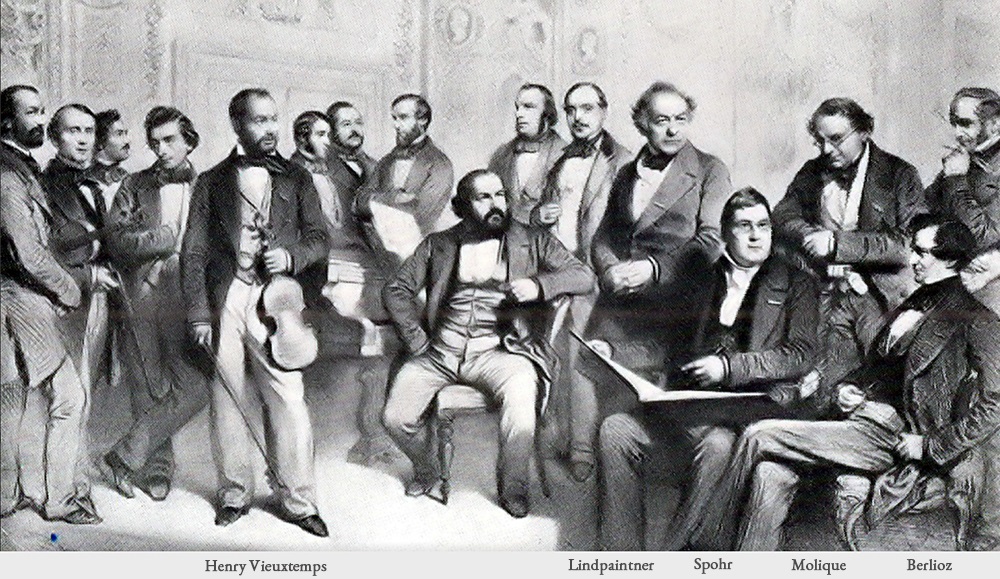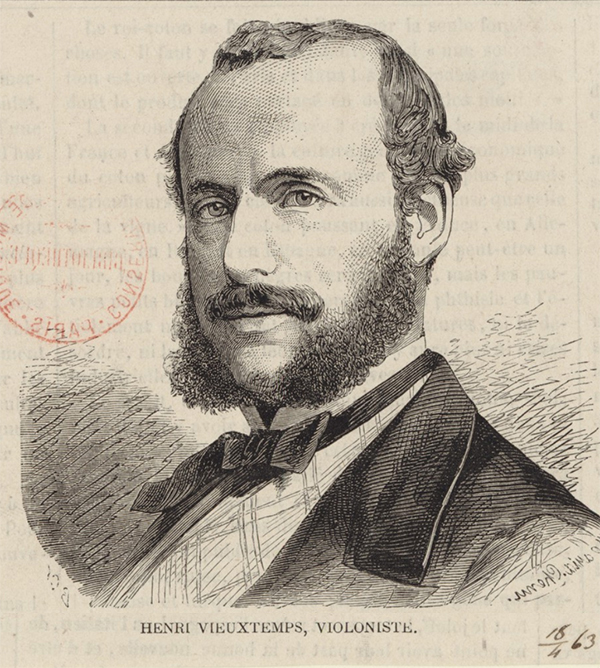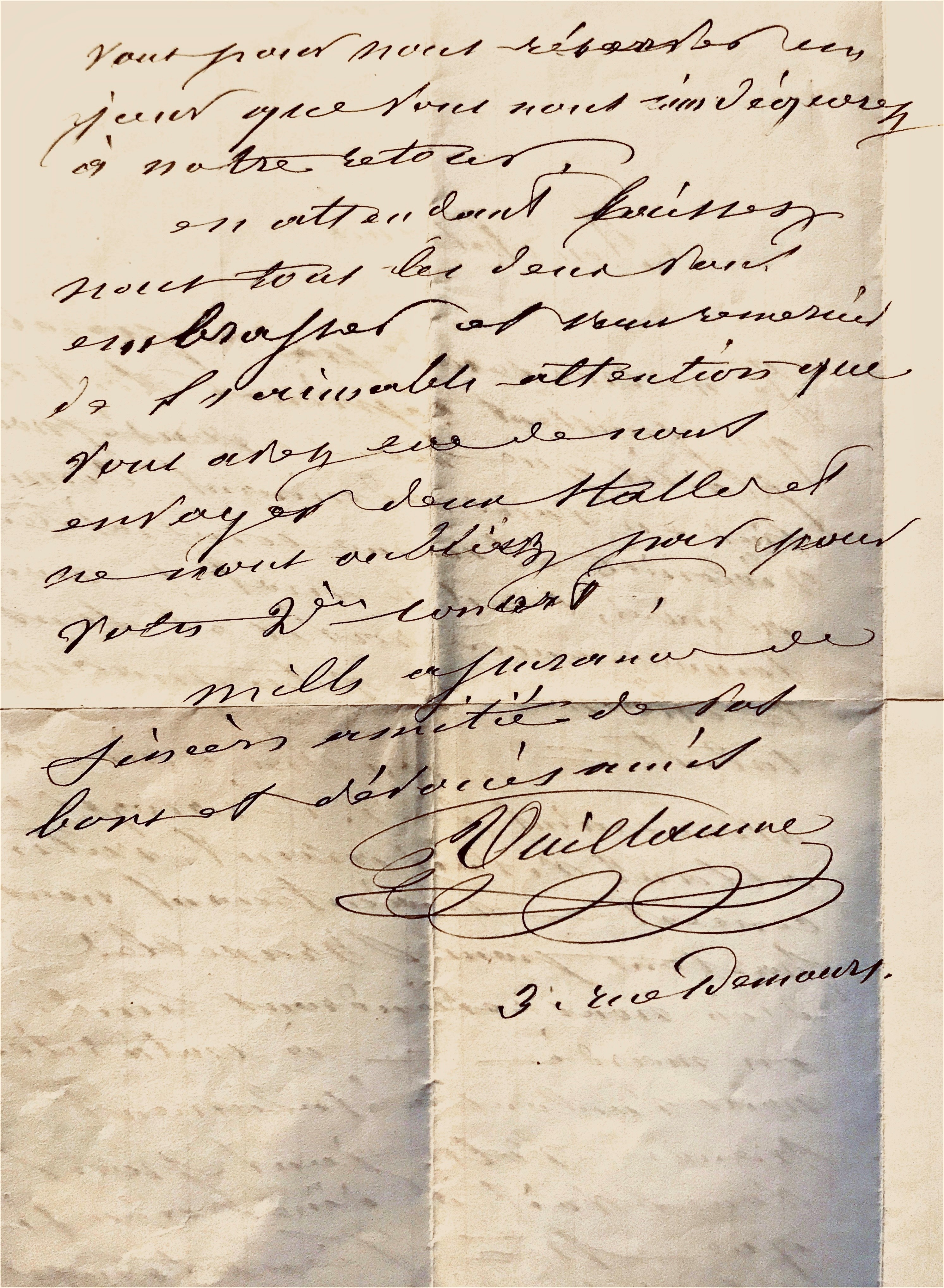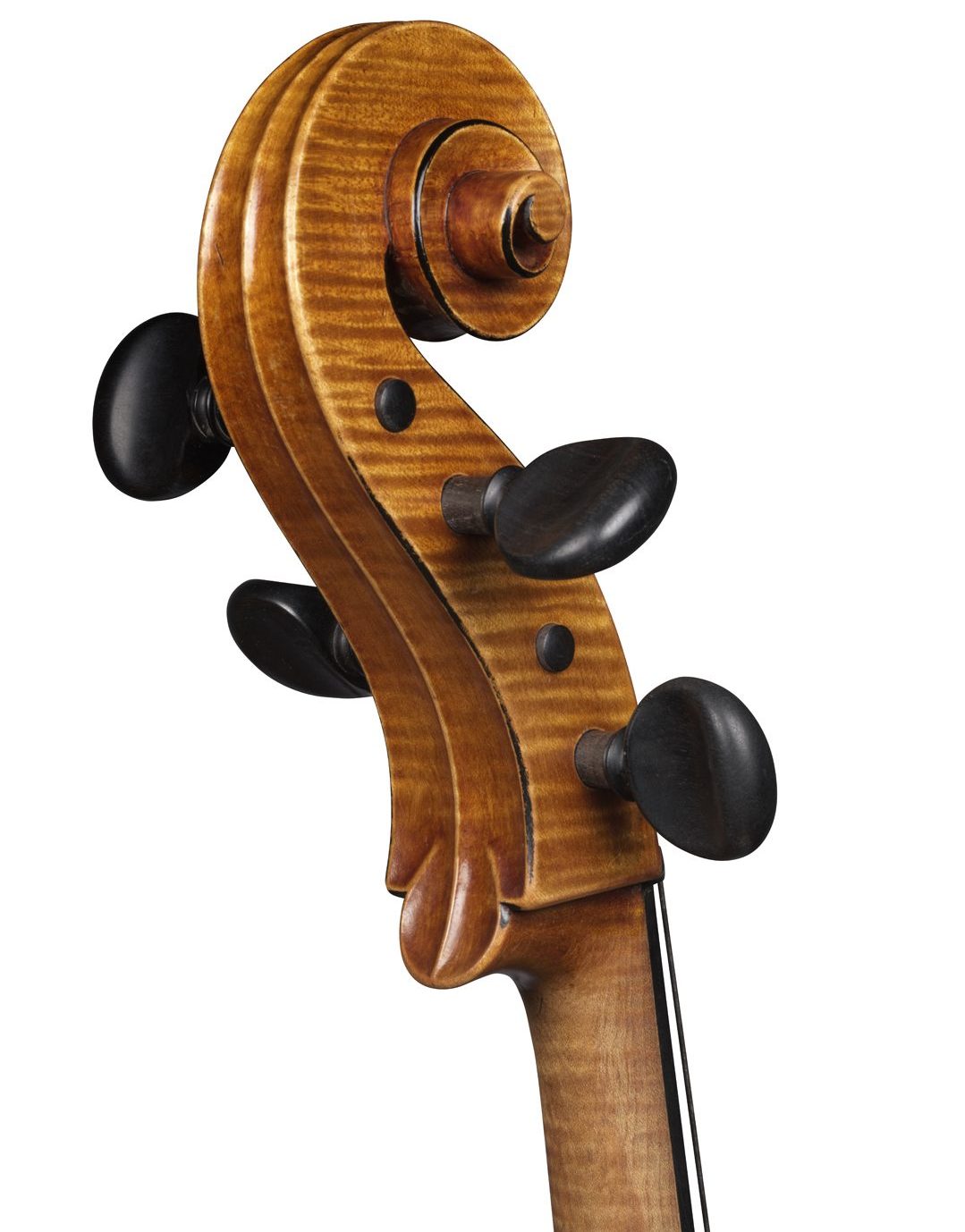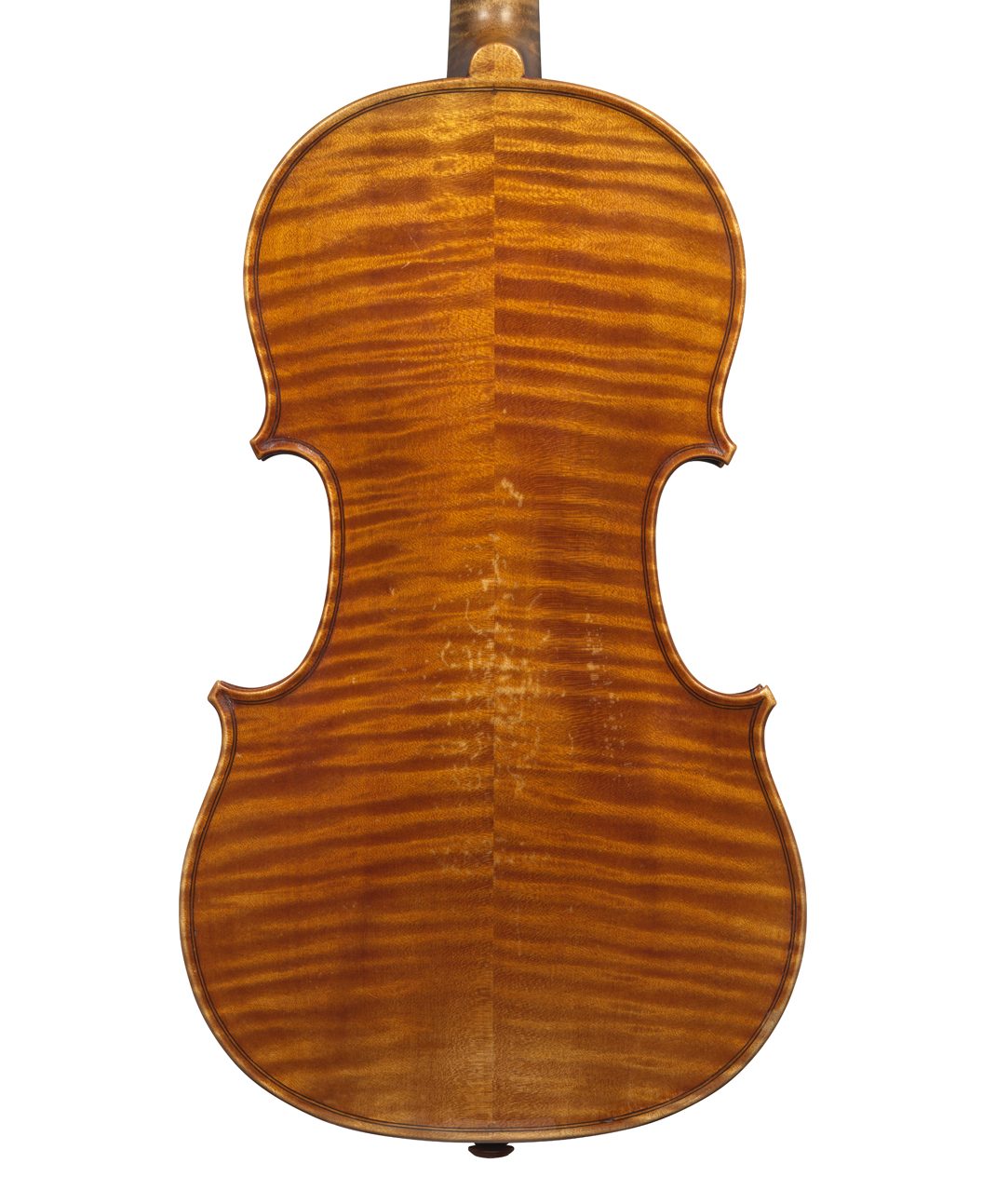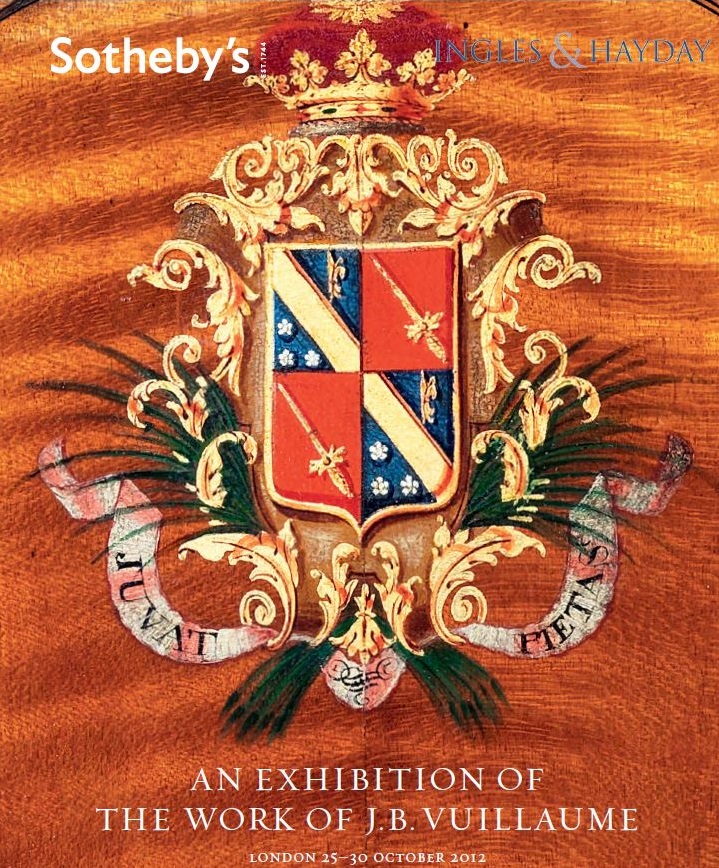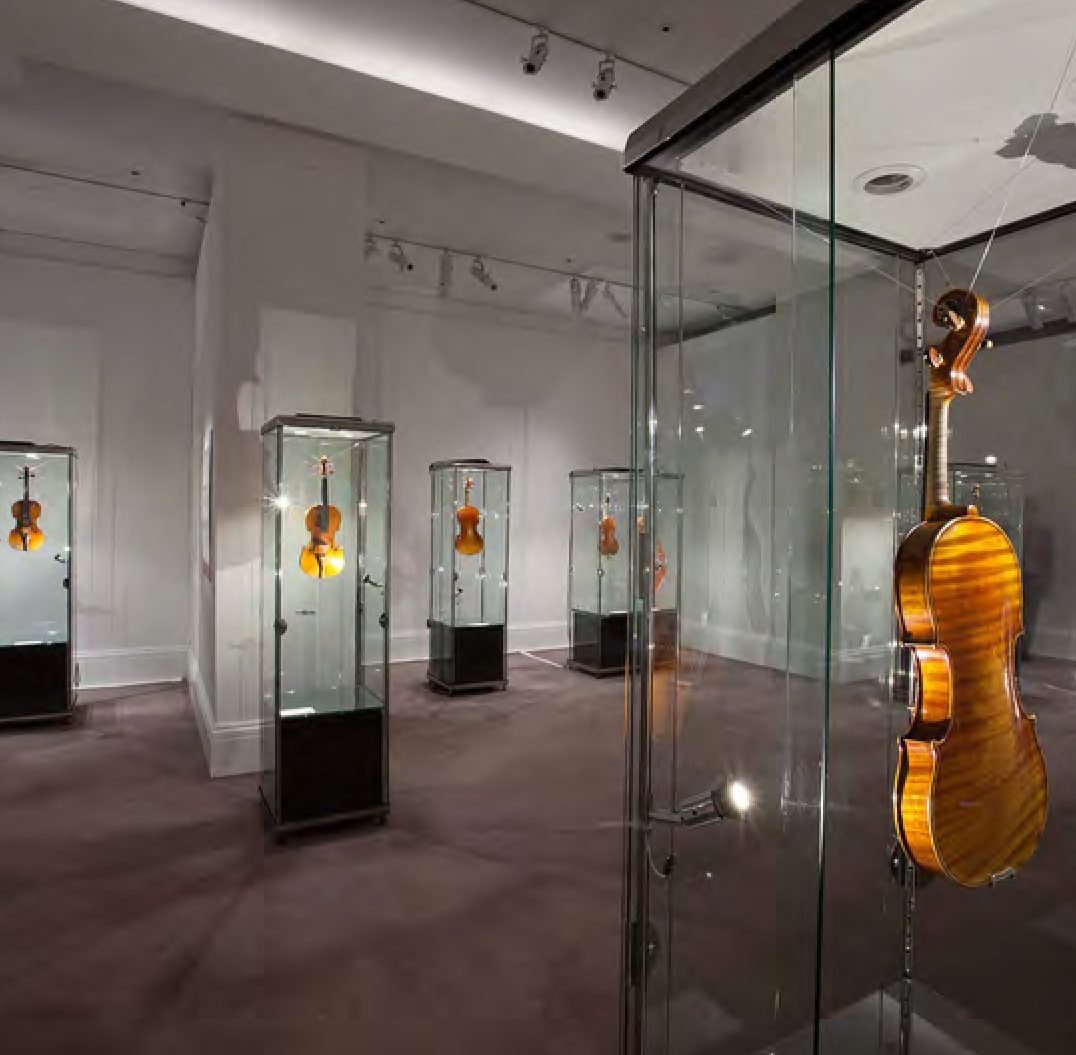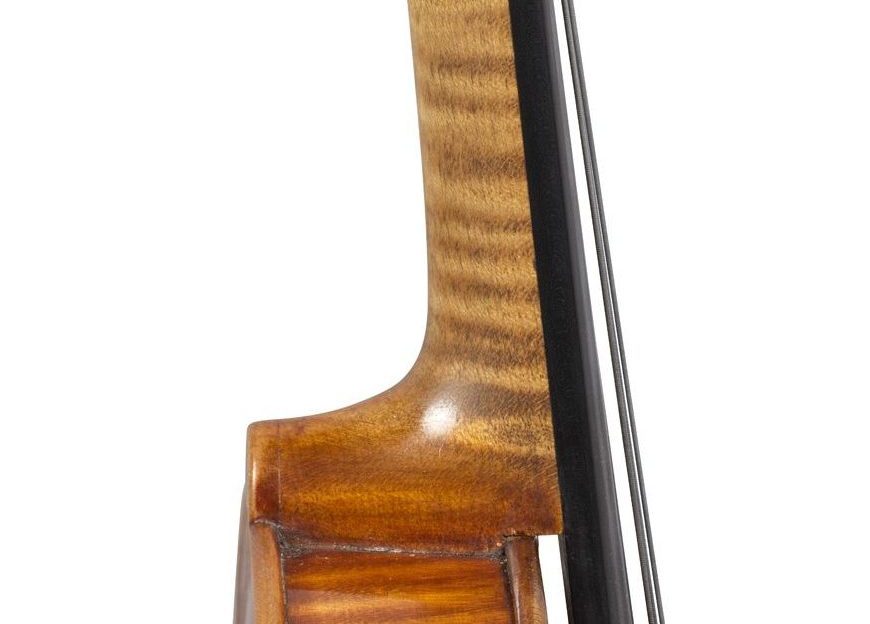“Vuillaume – a great artist!”
John Dilworth examines two magnificent instruments by Jean-Baptiste Vuillaume
A chance to examine two instruments by J.B.Vuillaume brings home his supreme mastery of violin making. These almost equally well-preserved examples are virtually as clean and fresh as they were when they left the workshop, and show the precision of the work as well as the acute understanding of the Stradivari model he was working from.
The Cello – Lot 83
The cello is a wonderfully fresh survivor, having remained in the family of the man who commissioned it, no less than Henri Vieuxtemps. The great Belgian violinist was a good personal friend of Vuillaume, and he ordered this cello in 1862 as a part of a complete quartet, which was delivered to him in the following year. He later wrote of the occasion ‘with my luthier friend, I shared all my thirst for sounds. He confided in me that he had understood Stradivari’s secret regarding the varnish he used, I was amazed. Its sounds were indeed worthy of a Stradivarius. Vuillaume was an artist. A great artist.’
Although the original Vuillaume quartet has been dispersed, the cello remained with Vieuxtemps’ family, passing to Henri’s great-grandson, Jean François Vieuxtemps, an amateur player. It is presently in the possession of his great-great-grandchildren.
Its condition reflects that intimate history. It was evidently not made as a copy, with shaded and softened varnish, and it still looks strikingly new; only in the upper shoulder of the back is the varnish at all worn. It is rather pale in colour, especially on the front, however, and it may have faded a little over the years, perhaps left on display in the family home rather than hidden in a case. Nevertheless, the texture is delicate and the surface undisturbed, even retaining small dust motes in the volutes of the scroll, almost fresh from the brush.
It is a fine Stradivari model, the scroll in particular an immaculately carved reproduction of the Golden Period. The body follows Stradivari’s ‘B’ form, one of his greatest and most innovative designs, introduced in around 1707. The materials throughout are of the finest; the back is of two matched quartered pieces, with a very regular and perfect rising flame, fading a little in the lower flanks. The ribs are matching, and the front is from particularly striking matched pieces of strong-grained spruce marked with a dramatic bear-claw figure.
The sound holes are precisely cut and positioned, but the lower wings are a little narrow, a feature shared with the Sheremetev cello Vuillaume made a few years later in 1865, as part of another prestigious quartet.
"He confided in me that he had understood Stradivari’s secret regarding the varnish he used, I was amazed. Its sounds were indeed worthy of a Stradivarius."
The Violin – Lot 44
A fine partner for this magnificent cello is another beautifully preserved violin by Vuillaume, a wonderful ‘Messie’ copy made in 1856, according to the inscribed date and the number ‘2173’ in the upper back.
The violin belonged to Olivier Jaques (1920-2005) who was originally a concert violinist with the Zurich Tonhalle orchestra, but later became an architect. He continued his deep interest in the violin, building a fine collection of Stradivari, Guarneri del Gesù, and particularly the work of J.B. Vuillaume, including some of the finest in existence, notably the decorated “Tsar Nicholas” of 1841 and “Caraman de Chimay” of 1865. Instruments from this collection were previously shown as part of the Sotheby’s Vuillaume exhibition in 2012, and this example was outstanding.
Vuillaume obtained the original ‘Messie’ in 1855, after his celebrated journey to Milan to secure Tarisio’s collection following the great collector’s death. What is particularly interesting about this violin is that Vuillaume has made it with a ‘baroque’ neck. It is presently blocked up a little at the root, but it was never morticed into the top block, and two holes can be seen in the upper block, where presumably nails once secured the neck in authentic style. From the detailed observation evident in the rest of the violin, this example may have been made before Vuillaume ‘modernised’ the original ‘Messie’, perhaps as a reminder of its original state. Whatever the case, it is quite remarkable.
As a detailed examination of the 1716 Stradivari, it is almost faultless. Fascinatingly, it is only the few faults detectable in the original that Vuillaume found himself unwilling or unable to duplicate. Although the slightly off-centre purfling joint in the lower bass corner of the front is accurately reproduced (although with Vuillaume’s habitual ebony rather than authentic dyed pearwood), the slight straightness in the upper corner is not, and neither is the asymmetry of the scroll, nor the curious star branded in its eye. But the varnish is superb, even capturing the slight staining of the front, where Stradivari’s colour coat has seeped slightly into the grain. The wear pattern rather imitates the ‘Medici’ of the same year, which is odd, as that is not a violin that Vuillaume was historically involved with. But the simple little tear in the upper right of the centre joint, the only flaw in the Messie’s varnish, is reproduced.

"Vuillaume was an artist. A great artist."
Viewing these instruments inspires admiration, even awe, of Vuillaume’s craftsmanship. The degree of finish and perfect observation is stunning. Vieuxtemps’ opinion of him as a great artist is fully vindicated. Especially as it comes from another indisputably great artist.
Recent Posts
Categories
- Feature Type
- Instrument Type
-
Maker
- Albani, Mathias (2)
- Amati, Andrea (8)
- Amati, Antonio & Girolamo (6)
- Amati, Girolamo II (6)
- Amati, Nicolò (6)
- Balestrieri, Tommaso (3)
- Banks, Benjamin (1)
- Bazin, Charles Nicolas (1)
- Bergonzi Family (1)
- Bergonzi, Carlo (2)
- Bergonzi, Michele Angelo (2)
- Bernardel, Auguste Sébastien Philippe (2)
- Bisiach, Leandro (2)
- Bultitude, Arthur Richard (1)
- Camilli, Camillo (2)
- Cappa, Gioffredo (2)
- Carcassi, Lorenzo & Tomaso (1)
- Ceruti, Giovanni Battista (3)
- Chanot, George Adolph (1)
- Cuypers, Johannes Theodorus (1)
- Dalla Costa, Pietro Antonio (1)
- Deconet, Michele (1)
- Fendt, Bernard Simon II (1)
- Fendt, Bernhard Simon I (1)
- Gabrielli, Giovanni Battista (1)
- Gagliano, Alessandro (2)
- Gagliano, Ferdinando (1)
- Genova, Giovanni Battista (1)
- Gisalberti, Andrea (1)
- Goffriller, Francesco (1)
- Goffriller, Matteo (1)
- Grancino, Giovanni (4)
- Grancino, Giovanni Battista II (1)
- Guadagnini, Gaetano II (1)
- Guadagnini, Giovanni Battista (7)
- Guarneri 'filius Andreæ', Giuseppe (3)
- Guarneri del Gesù, Giuseppe (5)
- Guarneri of Mantua, Pietro Giovanni (2)
- Guarneri of Venice, Pietro (3)
- Guarneri, Andrea (3)
- Götz, Conrad (1)
- Hill & Sons, W.E. (1)
- Kennedy, Thomas (1)
- Knopf, Carl Heinrich (1)
- Lott, John Frederick (1)
- Lupot, Nicolas (2)
- Mantegazza, Pietro Giovanni (2)
- Mariani, Antonio (1)
- Montagnana, Domenico (2)
- Panormo, Vincenzo Trusiano (1)
- Parker, Daniel (1)
- Peccatte, Dominique (1)
- Platner, Michele (1)
- Pressenda, Giovanni Francesco (1)
- Rayman, Jacob (1)
- Retford, William Charles (1)
- Rivolta, Giacomo (1)
- Rocca, Giuseppe Antonio (2)
- Rota, Giovanni (1)
- Rugeri, Francesco (3)
- Sartory, Eugène (1)
- Scarampella, Stefano (2)
- Schwartz, George Frédéric (1)
- Serafin, Santo (1)
- Sgarabotto, Gaetano (1)
- Sgarabotto, Pietro (1)
- Simon, Pierre (1)
- Stainer, Jacob (3)
- Storioni, Lorenzo (3)
- Stradivari, Antonio (14)
- Stradivari, Francesco (1)
- Stradivari, Omobono (1)
- Tadioli, Maurizio (1)
- Taylor, Michael (1)
- Tecchler, David (2)
- Testore, Carlo Giuseppe (1)
- Tourte, François Xavier (4)
- Tubbs, James (1)
- Voller Brothers (1)
- Vuillaume, Jean-Baptiste (10)
- Watson, William (1)
- da Salò Bertolotti, Gasparo (2)
- Author
- Charity
-
In the Press
- Antiques Trade Gazette (3)
- Archi-magazine.it (1)
- Art Daily (2)
- CNN Style (1)
- Classic FM (2)
- ITV (1)
- Ingles & Hayday (3)
- Liberation (1)
- Life Style Journal (1)
- London Evening Standard (1)
- Paul Fraser Collectibles (1)
- Rhinegold Publishing (1)
- Sotheby's (1)
- Strings Magazine (2)
- Tarisio (2)
- The Fine Art Post (1)
- The Strad (7)
- The Times (1)



